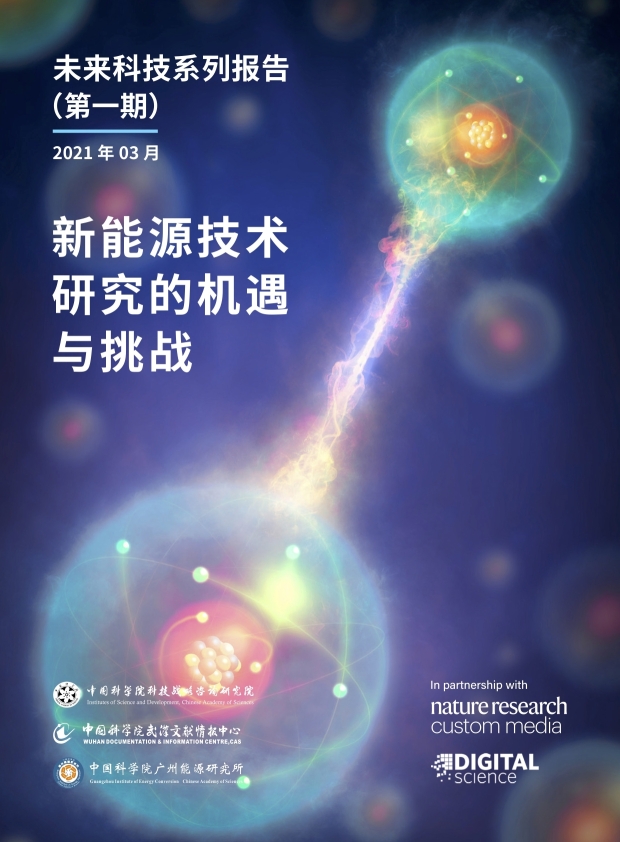On Apr 12, at a release ceremony jointly held by the Institutes of Science and Development of Chinese Academy of Sciences, Chinese Academy of Sciences (CASISD) and Springer Nature, the report New Energy Technology Research – Opportunities and Challenges went public.
The Report has resulted from a collaborative effort among CASISD, the Wuhan Library of CAS, the Guangzhou Institute of Energy Conversion of CAS, Springer Nature, and Digital Science.

The transition to a low/zero-carbon energy system and the reshaping of the modern energy system are necessary for achieving the Sustainable Development Goals (SDG) of the United Nations, coping with the global climate change crisis, and promoting the “green recovery” of the world economy in the post-pandemic era, said Prof. PAN Jiaofeng, President of CASISD, when addressing the release ceremony.
Currently, major countries and regions in the world attach great importance to the development of new energy technologies with the investment continuously increasing. New energy technology innovations and disruptive energy technology breakthroughs have evolved as the key means to continuously change the world energy landscape and enable the carbon neutral actions of all countries across the globe.
Based on the Dimensions database developed by Digital Science, and combining bibliometric analysis, patent analysis and expert interviews, this study systematically analyzes eight new energy fields, including solar, wind, biomass, geothermal, nuclear, hydrogen, energy storage, and energy internet, as well as 20 subtypes of new energy technologies over the period from 2000 to 2019 (with a focus on the period from 2015 to 2019), to reveal hot frontiers of global new energy research, the potential for industrial transformation, and future development trends. The study takes a global perspective, considering the development of China’s new energy technologies and corresponding research patterns, and conducts a comparative analysis of China’s research competitiveness with other major countries and regions.
The Report, focusing on the new energy field, is the first of the “Future Science and Technology” serial reports jointly initiated by CASISD and Springer Nature.
'The “Future Science and Technology” serial reports represent an important cooperation mechanism,' remarked Mr. JIANG Tianhai, head of Government Affairs and Policy in Greater China from Springer Nature. The joint serial reports are dedicated to provide high-quality reports on research frontiers, as well as the trend analysis, aiming to provide information for scientific researchers as well as science and technology policymakers across the globe.
(Source: CASISD)

